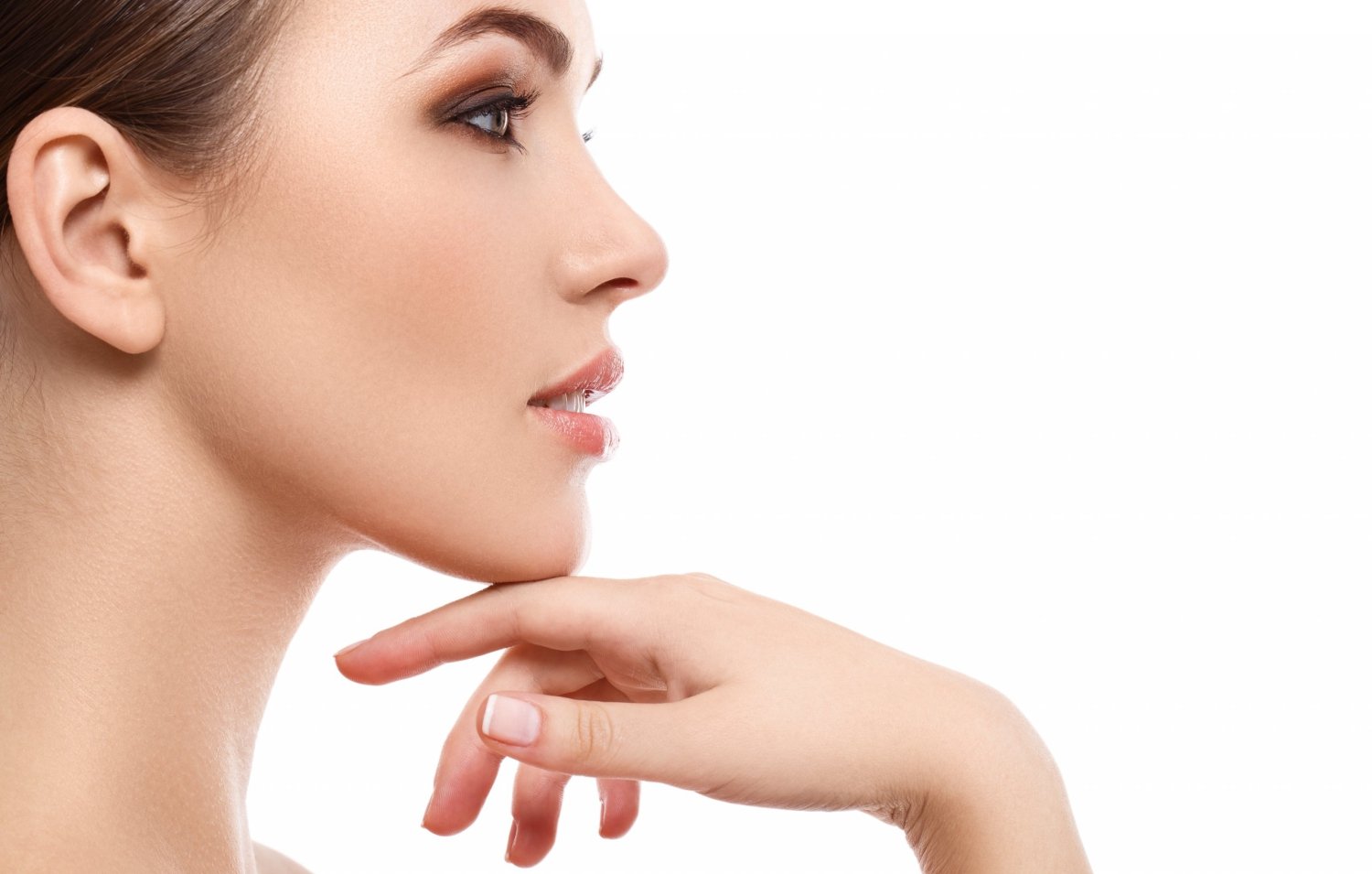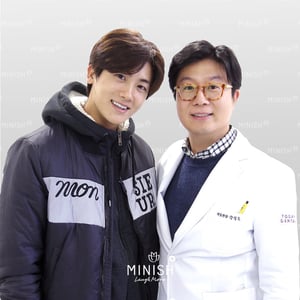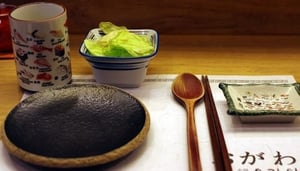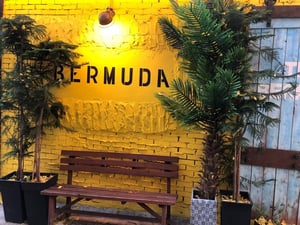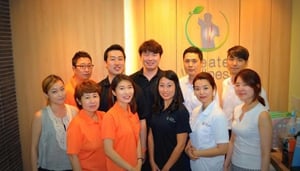Revision Rhinoplasty Guide to Reviving Your Nose in South Korea
Revision rhinoplasty in Korea starting to become a real consideration every time you look in the mirror at that original nose job that you are beginning to regret? Get ready to transform your look and feel more confident than ever with having it revised! This innovative procedure, also known as secondary rhinoplasty, is perfect for those who weren't happy with the results of a previous nose job or suffered an injury that affected the appearance of their nose.
Contents
- Revision Rhinoplasty in Korea
- Why Choose South Korea for Revision Rhinoplasty
- Considering Candidacy
- Questions to Ask Your Korean Surgeon
- Preparing for a Successful Surgery in Korea
- Frequently Asked Questions
South Korea has some of the world's best revision rhinoplasty specialists since it became a leading hub for plastic surgery, and for good reason. With a reputation for highly skilled professionals and meticulous attention to detail, Korean plastic surgeons are among the best in the world. They employ advanced techniques and innovative approaches to revision rhinoplasty and can create truly stunning results that will leave you feeling more confident and satisfied with your appearance than ever before!
If you have been considering a change in the appearance of your nose, you may want to explore the benefits of revision rhinoplasty performed by Korean plastic surgeons. Their expertise and experience can lead to a transformation that could boost your confidence and help you love your new look. It may be worth exploring this option to achieve the desired results.
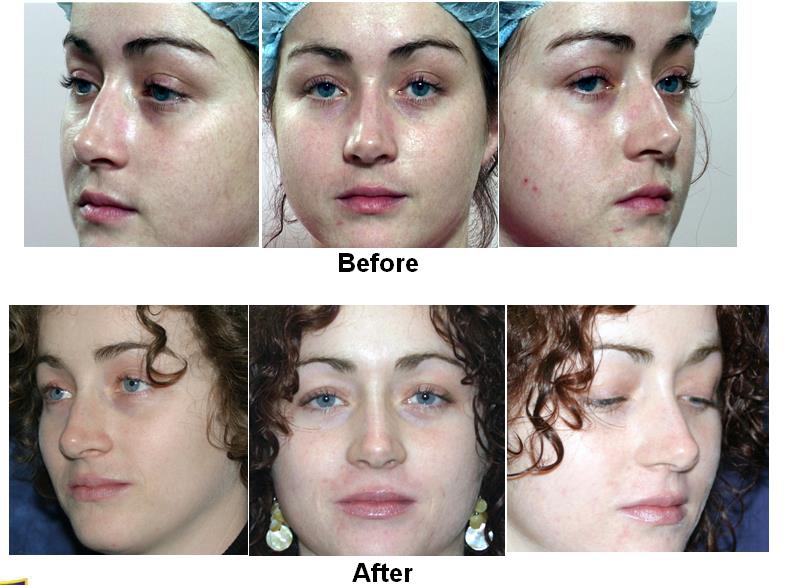
Revision Rhinoplasty in Korea
Skilled plastic surgeons in Korea can achieve exceptional results, whether you're looking to address a specific issue or simply enhance the appearance of your nose. The best part? Revision rhinoplasty can provide a rejuvenating transformation, regardless of your original nose shape!Your journey to a new nose begins with a consultation with a highly qualified plastic surgeon in Korea. During this consultation, your surgeon will take the time to understand your goals and expectations for the procedure. With their extensive experience, they can also offer expert advice and recommendations to help you achieve the best possible results.
Sometimes, revision rhinoplasty requires more complex techniques, like using sutures and grafts to reshape and secure the nose. Rest assured, Korean plastic surgeons are experts in these techniques and can use them to improve nasal passageways and create greater balance in your overall appearance.
Choosing the right surgeon is crucial to achieving the desired outcome of your revision rhinoplasty. That's why it's important to seek out a highly qualified and experienced specialist who has a deep understanding of this intricate and delicate procedure. Fortunately, medical tourism professionals like Shin Medical in Korea can provide invaluable assistance in selecting the right surgeon and navigating the entire process to ensure a seamless and successful experience.
Why Choose South Korea for Revision Rhinoplasty
South Korea's reputation for excellence in revision rhinoplasty has been steadily increasing in recent years. This is due to the fact that the South Korean culture of beauty is deeply rooted and has been shaped by historical, social, and economic factors. The country's tumultuous history, marked by foreign invasions and war, has contributed to a national desire for stability and prosperity, with physical appearance seen as an important component of success and upward mobility.The emphasis on beauty in South Korea extends beyond physical appearance and includes other aspects such as manners, etiquette, and personal grooming. There is a strong cultural emphasis on harmony and balance in all aspects of life, including aesthetic harmony and symmetry in one's physical appearance.
South Korean plastic surgeons are trained to recognize and prioritize these values in their work. They aim to create results that not only enhance the patient's physical appearance but also reflect the cultural emphasis on the aforementioned harmony and balance. This is achieved through careful assessment of the patient's facial structure and features, and a personalized treatment plan that takes into account the patient's unique needs and preferences.
In addition to the use of advanced technologies and equipment, South Korea's booming technology industry has also contributed to the field of plastic surgery. Many of the technologies used in plastic surgery have been developed or improved upon by Korean tech companies, such as advanced imaging and facial recognition software. These innovations have helped plastic surgeons to better understand and analyze the facial structure of patients, allowing for more precise and personalized treatments.
Moreover, Korea's culturally ingrained commitment to life-long education plays a significant role in the training of plastic surgeons. Many plastic surgeons in Korea continue their education well into their careers, attending conferences, seminars, and workshops to stay up-to-date with the latest research, techniques, and technologies in their field. This continuous learning helps them to refine their skills and deliver the best possible outcomes for their patients.
Overall, South Korea's combination of highly skilled surgeons and exceptional quality of care make it an ideal destination for those seeking top-quality revision rhinoplasty surgery.
Considering Candidacy
When considering a revision rhinoplasty, it's essential to evaluate any underlying issues with the previous surgery and other factors that may impact the outcome of the procedure. These factors can include the current state of your nose, any existing health conditions, and realistic goals for the revision rhinoplasty.Some examples of issues that may affect candidacy for revision rhinoplasty include:
Scar tissue
Scar tissue from a previous rhinoplasty can make revision surgery more challenging and may limit the extent of changes that can be made to the nose. One of the primary concerns with scar tissue is that it can limit the amount of tissue available for reshaping the nose. This can be particularly challenging when trying to achieve changes to the nasal tip, which is composed of delicate cartilage and soft tissue. Scar tissue can also make it difficult to correct asymmetries or irregularities in the nasal bridge or nostrils.
To address these challenges, your Korean plastic surgeon may use specialized techniques to carefully dissect the scar tissue and reshape the underlying structures. This may involve using a microsurgical approach to minimize trauma to the surrounding tissue and preserve as much healthy tissue as possible. A surgeon may also use techniques such as cartilage grafting or tip suturing to provide additional support and shape to the nose.
Breathing difficulties
If you have difficulty breathing through your nose, it's important to determine whether the issue is related to the previous surgery or if there are underlying structural problems that need to be addressed before undergoing a revision rhinoplasty. Such as:- Deviated septum: The septum is the cartilage and bone that separates the two nostrils. If the septum is crooked or deviated, it can obstruct airflow and make it difficult to breathe through the nose. A deviated septum can be corrected through a procedure called septoplasty, which straightens the septum and improves nasal airflow.
- Turbinate hypertrophy: The turbinates are structures inside the nose that help to warm and humidify the air we breathe. If the turbinates are swollen or enlarged, they can obstruct airflow and cause difficulty breathing through the nose. Turbinate hypertrophy can be treated with a procedure called turbinate reduction, which reduces the size of the turbinates and improves nasal airflow.
- Nasal valve collapse: The nasal valve is the narrowest part of the nasal airway and can collapse during inspiration, obstructing airflow. This can be caused by weak or poorly supported cartilage in the nasal sidewall or nasal tip. Nasal valve collapse can be corrected through a procedure called nasal valve repair, which reinforces the cartilage and improves nasal airflow.
- Cartilage collapse: In some cases, the cartilage in the nasal tip or sidewalls may collapse, obstructing airflow and causing difficulty breathing through the nose. Cartilage collapse can be corrected through a procedure called cartilage grafting, which uses cartilage from other areas of the body to reinforce the nasal structures and improve nasal airflow.
Skin thickness
Thick skin can make it difficult to achieve certain aesthetic goals, and it may be necessary to discuss other options for improving the appearance of your nose. One of the main challenges with thick skin is that it can obscure the underlying structures of the nose, making it more difficult to see and manipulate the cartilage and bone. This can make it harder to create a defined nasal tip or reduce the size of the nostrils, which may be a goal for some patients.In some cases, a surgeon may need to use additional techniques to thin the skin of the nose and provide better visibility of the underlying structures. This can involve carefully removing some of the excess skin and tissue or using special surgical instruments to create a more defined appearance.
Some techniques that a Korean plastic surgeon may use to thin the skin of the nose during a revision rhinoplasty include:
- Cartilage grafting: A surgeon may use cartilage from other areas of the body to help support the nasal structures and improve the overall appearance of the nose. This can also help to create a more defined and sculpted look.
- Tip suturing: This technique involves using special sutures to reshape the cartilage in the nasal tip, which can help to create a more refined and defined appearance.
- Alar base reduction: If the nostrils are too wide, a surgeon may perform an alar base reduction to reduce the size of the nostrils and create a more balanced and proportionate appearance.
- Skin thinning: A surgeon may carefully remove some of the excess skin and tissue on the nose to create a thinner and more streamlined appearance. This can be particularly useful for patients with thick skin who want to achieve a more defined nasal tip or reduce the size of the nostrils.
- Use of lasers: Some surgeons may use lasers to help thin the skin on the nose, which can create a more defined appearance and improve the overall results of the surgery
Bone structure
The underlying bone structure of the nose can impact the ability to achieve certain changes through revision rhinoplasty. For example, in cases where the bone structure is weak, a surgeon may need to use additional techniques to reinforce and support the nose. Such as cartilage grafts or synthetic materials may be used to provide additional support and help to reshape the nose.Additionally, the bone structure of the nose can impact the ability to create a defined nasal tip. In cases where the nasal bones are weak or poorly developed, the nasal tip may appear broad or undefined. A skilled surgeon may be able to improve the appearance of the nasal tip by reshaping the cartilage and using grafts to add support and definition.
Finally, it's important to discuss any potential risks and possible complications with your surgeon prior to any procedure. Revision rhinoplasties can be an effective way to enhance the appearance of your nose through facial contouring, but they come with certain risks, just like any form of plastic surgery. It is essential to evaluate these risks and take the necessary steps to minimize them wherever possible.
Questions to Ask Your Korean Surgeon
When considering revision rhinoplasty, it is essential to feel comfortable and confident in your decision-making process. Before undergoing any surgery, you should always ask your surgeon as many questions as possible to ensure you understand the details of the procedure and its results. When researching revision rhinoplasty in South Korea, the following questions should be at the forefront:
What is your experience in performing this procedure?
Ensure that you are comfortable that the surgeon has performed enough revision rhinoplasties in order to ensure a successful outcome. A study published in the Aesthetic Surgery Journal found that the success rate of revision rhinoplasty was higher for surgeons who had performed more than 100 previous revision rhinoplasties. The study also found that the complication rate decreased as the surgeon's experience increased. Furthermore, revision rhinoplasty is often more challenging than primary rhinoplasty due to the presence of scar tissue and altered nasal anatomy from the previous surgeries. Inexperienced surgeons may not be able to address the complexities of the procedure, leading to unsatisfactory results or potential complications.
How much downtime should I expect after the procedure?
Knowing what to expect during your recovery is key to managing expectations post-surgery. In general, patients can expect to experience some swelling, bruising, and discomfort for the first week or two following the procedure. But your plastic surgeon may have more particular considerations about this depending on the nature of your operation.
What kind of anesthesia will be used during surgery?
Make sure that you are comfortable with the type of anesthesia your surgeon will be using. It is also important to understand the qualifications and experience of the anesthesiologist who will be administering the anesthesia. An experienced anesthesiologist can help ensure a safe and successful surgery, while an inexperienced one could potentially cause complications, including allergic reactions, breathing difficulties, and nerve damage.
How much pain should I expect after surgery?
Knowing what to expect can help you manage your post-surgery pain. Usually, patients can expect to experience mild to moderate pain and discomfort for the first few days after surgery. This pain can usually be managed with over-the-counter pain medications such as acetaminophen or ibuprofen, but your surgeon may recommmend stronger pain medications if needed.
What results can I realistically expect?
Getting a clear understanding of what results you can expect can help you make a more informed decision. A study published in the Aesthetic Surgery Journal found that patient satisfaction after revision rhinoplasty was closely linked to having realistic expectations for the outcome. Patients who had unrealistic expectations for the outcome were more likely to be dissatisfied with the results of their surgery. Therefore, it is crucial to have a thorough consultation with your surgeon to ensure that you have a clear understanding of what can be achieved through revision rhinoplasty.In addition to these questions, it is also important to make sure that you are completely comfortable with the surgeon, their staff, and the Korean clinic that you are using. Make sure to ask as many questions as possible, and do your own research to ensure that you make the right decision for your needs.
Preparing for a Successful Surgery in Korea
When it comes to planning for a successful revision rhinoplasty surgery in South Korea, there are several important factors to consider. Here are three key areas to focus on:
Research and Communication
- Take the time to thoroughly research the procedure, including the risks and benefits, and consult with your Korean doctor to ask any questions you may have. A study in the Journal of Craniofacial Surgery found that patients who were educated about the potential risks and benefits of rhinoplasty had a lower rate of complications after surgery.
- Make sure to understand the qualifications of the surgeon and the specific type of rhinoplasty they specialize in. If you do not thoroughly research the qualifications of the surgeon and the specific type of rhinoplasty they specialize in, you could potentially experience unsatisfactory results or even complications from the surgery. Some possible bad outcomes include:
- Functional issues: A poorly performed rhinoplasty can also result in functional issues such as breathing difficulties, chronic congestion, and sinus infections.
- Infection: Infection can occur after any surgery, and not understanding the qualifications of the surgeon and their practices can lead to an increased risk of infection.
- Research and fully understand the components of the procedure that you want, as well as the potential results. It is important to have a clear idea of the desired outcome and communicate it effectively to the surgeon. A study published in the Archives of Plastic Surgery found that patients who had clear communication with their surgeon about their desired outcomes and concerns had better postoperative satisfaction levels.
Pre-Operative Preparation
- Set aside at least a week for physical and emotional preparation before the surgery. A study published in the Aesthetic Surgery Journal found that patients who engaged in healthy habits such as regular exercise, good nutrition, and stress reduction before surgery had better outcomes than those who did not.
- Focus on eating healthy and exercising daily to increase physical resilience and reduce stress. A study published in the journal, Aesthetic Plastic Surgery, found that patients who engaged in regular exercise and maintained a healthy diet before and after cosmetic surgery had better surgical outcomes, including improved wound healing and reduced risk of complications. In addition, a study published in the journal, Plastic and Reconstructive Surgery, found that a healthy diet rich in vitamins and antioxidants can help reduce inflammation and promote healing after surgery. antioxidants can help reduce inflammation and promote healing after surgery.
- Have plenty of rest and avoid drinking alcohol, taking drugs and smoking. For example, a study published in the journal Plastic and Reconstructive Surgery found that smoking before and after rhinoplasty surgery significantly increased the risk of complications, including infection, poor wound healing, and the need for revision surgery. Another study published in the Annals of Plastic Surgery found that patients who abstained from alcohol and other drugs for at least 48 hours prior to surgery had a lower risk of complications and better surgical outcomes.
Record Keeping and Financial Planning
- Keep records of any medical history related to your nose to help the doctor establish the ideal plan of action. This information can include previous surgeries, allergies, medications, and any existing medical conditions. By understanding your medical history, the surgeon can better predict the outcome of the procedure and plan accordingly to ensure the best possible results.
- Discuss all financial details and understand any potential costs related to the surgery before scheduling the appointment. In addition to the cost of the procedure itself, there may be additional costs such as anesthesia, facility fees, and post-operative care. It's important to inquire about any potential costs upfront and make sure you understand what is and isn't included in the quoted price.
- Be prepared to be understanding of potential procedure-related obstacles, as minor adjustments at times can produce the desired results. According to a study published in the Journal of Plastic, Reconstructive & Aesthetic Surgery, a significant number of patients who undergo revision rhinoplasty report persistent or new issues after surgery, such as difficulty breathing or cosmetic dissatisfaction. However, the study also found that many of these issues can be successfully addressed with minor adjustments or further procedures.
If you're exploring options for a revision rhinoplasty procedure in Korea, it may be helpful to consider partnering with a trusted medical tourism provider. Companies like Shin Medical specialize in guiding patients through the medical tourism process and can provide valuable resources and support.

